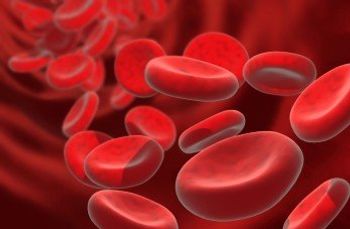
Optimizing Radiosurgery for CNS Tumors: Insights on Technology and Teamwork

William Kennedy, MD, discussed modern radiosurgery techniques, technology selection, and the multidisciplinary approach for treating complex CNS tumors.
William Kennedy, MD, gave his expert perspective on the current state of radiosurgery for central nervous system (CNS) tumors. He also highlighted the diverse array of radiosurgery platforms available today, emphasizing that institutions like the Ivy Brain Tumor Center often employ multiple sophisticated systems.
Kennedy, a neuro-radiation oncologist at the Ivy Brain Tumor Center, underscored the critical importance of a nuanced understanding of each technology's capabilities and limitations. The selection of the optimal tool, he explains, is not merely a matter of preference but rather a strategic decision driven by the specific characteristics of the tumor, its location, and the individual patient's clinical scenario.
Although technology is of high importance for advancing research, the multidisciplinary team plays a pivotal in delivering cutting-edge radiosurgery. This integrated approach ensures that each patient benefits from a comprehensive evaluation and a tailored treatment plan that leverages the full potential of modern radiosurgery.
What are the current noninvasive radiosurgery methods you are utilizing at Ivy Brain Tumor Center for CNS tumors?
Kennedy: [At the Ivy Brain Tumor Center], we have 3 different ways to deliver radiosurgery, which, to take a step back, there are no incisions. It’s not an actual surgical procedure. The concept is to give a high dose of radiation to a small target in a focused manner, usually over 1 to 5 days, and there are several different ways to deliver radiosurgery that are well established. We currently have three that we use at our institution on a regular basis. They are called Gamma Knife, CyberKnife, and TrueBeam, with a monitoring system called ExacTrac. There’s a bit of redundancy among all three of those different machines overall, but each has some slightly different advantages and one is not necessarily better than the other. Rather, for whatever situation or problem that we are trying to solve with the patient, I try and pick the right tool for that job.
How does the Ivy Brain Tumor Center position itself to be at the forefront of cutting-edge radiosurgery treatment?
Besides having access to the latest technology, things like the Gamma Knife and CyberKnife have been in clinical use for decades now. They have continually been updated and refined. We are dealing with the latest and greatest technology available to deliver radiosurgery treatments. That’s only one piece of the puzzle. What’s most important is not the tool itself but who’s using it. Fortunately, at a place like the Ivy Brain Tumor Center, where my radiation oncology colleagues and I support one of the biggest neurosurgery practices in the world––having the large amount of patients whom we care for every day who come through our office with a wide variety of complex cases––over time, over many years, that in and of itself builds expertise and a position to be at the forefront of figuring out what are the limits that we can push these technologies to try and help patients.
We are at a place where we have a high patient volume, a lot of complex cases as well, and then, most importantly, it’s not just the physicians. It’s not just us radiation oncologists and our neurosurgery colleagues but also a well-trained expert support staff. All the physicists, the planning specialists, the nursing therapists, even up to the front office; all these are critical steps in the radiosurgery process. Having a team that’s fully dedicated to that at all times helps position us well too.
Are you able to highlight any key clinical trials that are investigating radiosensitizing drugs?
I specialize not only in caring for patients with various brain tumors but also head and neck cancers, where we also use radiosensitizers and are investigating some others in the brain tumor space on a national level. There are some different concepts that are going through some of the larger trial organizations that I am a part of. Currently, most of those have been either recently concluded or there are new concepts in development.
Right now, there are a couple here at Ivy, one of which is either in the newly diagnosed or recurrent setting in patients with glioblastoma, a medication called AZD1390, and that’s an investigational medication. The whole mechanism of how we think it works is by sensitizing tumor cells to radiation therapy by blocking an enzyme or a molecule in tumor cells called ATM. That's an important component of repairing radiation-induced damage and tumor cells. We have been actively treating patients with the ATM inhibitor AZD1390 here at Ivy in combination with radiation therapy after surgery. The trial is currently under investigation, and we hope to have results on not only the safety but the effectiveness over the next several months or couple of years. These trials do take time for many patients to know if this is the right next approach.
One of the other medications that we are using that’s considered a radiation sensitizer is called niraparib [Zejula]. That is a medication that inhibits a molecule called PARP and is another important DNA repair “machinery” in tumor cells. We think that it works synergistically with radiation therapy. We are a little further along with that concept now, whereas we had some encouraging initial results in a smaller group of patients. This smaller cohort, not a randomized head-to-head comparison, showed that we had some encouraging initial results such that we are able to open up a much larger randomized clinical trial where we are giving half of the patients standard-of-care radiation with the standard-of-care chemotherapy called [temozolomide; Temodar] and the other half of patients radiation therapy with this radiation sensitizer, niraparib. The trial is expected to last multiple years, [as we are] evaluating this in several hundred patients across the world.
As a radiation oncologist, how do you work with other multidisciplinary providers to create the best possible care for your patient?
It’s not just the weekly tumor boards, but that's our structured weekly team huddle regarding patient care. A lot of [the meeting] is having those conversations in a formal, structured environment. That’s just one component of it. The physicians—not only radiation oncologists, neurosurgeons, neuro-oncologists, and radiologists who read the scans [but also] the pathologists [who] look at the tumor and make the diagnosis under the microscope—[are] only one part of the whole team here, one part of that multidisciplinary care.
The fact of the matter is that many more conversations are had on a daily basis between all team members to figure out the best plans for patients, not just this formal, 1-hour, once-a-week meeting. All the other important components of the team, whether it’s dietitians, physical therapists, occupational therapists, or speech-language pathologists, there’s a whole host of nonphysician experts to help provide these important parts of multidisciplinary care too. We are fortunate to have the full roster of all those important providers to care best for these patients because they often are dealing with a lot. There are a lot of important aspects of care that need to be addressed, and meeting at least once a week and having those conversations…is the way that we do it. It just boils down to communication, availability, and showing up.
What are the next steps for head and neck cancer treatment in the radiation oncology space?
The biggest thing that we have been trying for many years now has to do with the intensifying treatment for patients with HPV [human papillomavirus]-mediated head and neck cancers. That’s not a novel answer. To get a bit of background, for many years, for decades, when smoking rates were quite high, the majority of all head and neck cancer cases were primarily caused by smoking or heavy drinking. Not as much as HPV. We’ve known over the past couple of decades or so that the pendulum has swung, where even though a cancer looks the same under the microscope, it’s still considered a squamous cell carcinoma. It occurs in the same location as smoking-mediated cancers such as the back of the tongue or the tonsil. We know about two-thirds of these cancers are now caused by HPV, where often the prognosis is much better. Cure rates are much higher, but we are still applying the same treatments that we use for a biologically different disease in the same location.
For decades, we have been trying to safely deintensify treatment, to hopefully decrease some of the acute and late adverse effects that radiation and chemotherapy can cause, because head and neck chemotherapy and radiation is one of the toughest, most difficult treatments in all of oncology for patients to get through, even with a very closely knit expert team that we have at our disposal here. It’s also figuring out, “How do we do that? How do we deintensify treatment again while maintaining excellent cure rates?” Over multiple large randomized trials across the US in hundreds of patients, we have not been able to find the right combination yet, whether it is decreasing the dose of radiation; switching out the classic radiosensitizing chemotherapy, cisplatin; trying other medications like immunotherapies or other noncisplatin medications like cetuximab [Erbitux] or even other newer small molecule inhibitors. There still has not been a winner so far, but that is the main direction and probably the biggest unmet need where most efforts are going in the field of head and neck oncology. Of course, there are many other topics too, but that’s the biggest one, and that’s where most research focus has been and, quite frankly, should be right now.
What is a message you want your colleagues to take away from this conversation?
From a 10,000-ft view, without getting into the nitty-gritty of radiation sensitizers and de-escalation for HPV cancer, despite all the great technologies that we have here at Ivy, what I think makes this place great, what makes me proud to work here, and what means the most for our patients is how closely we providers communicate with each other and how closely knit of a team we are. Being available, showing up to the tumor board, and always picking up the phone when your colleague calls to discuss a tough case, never being afraid to ask for help––all those things I have learned since I have been in practice here. Those are what make the difference, more than anything. I wish someone had given me that advice when I was starting out.
Newsletter
Stay up to date on recent advances in the multidisciplinary approach to cancer.






























































































